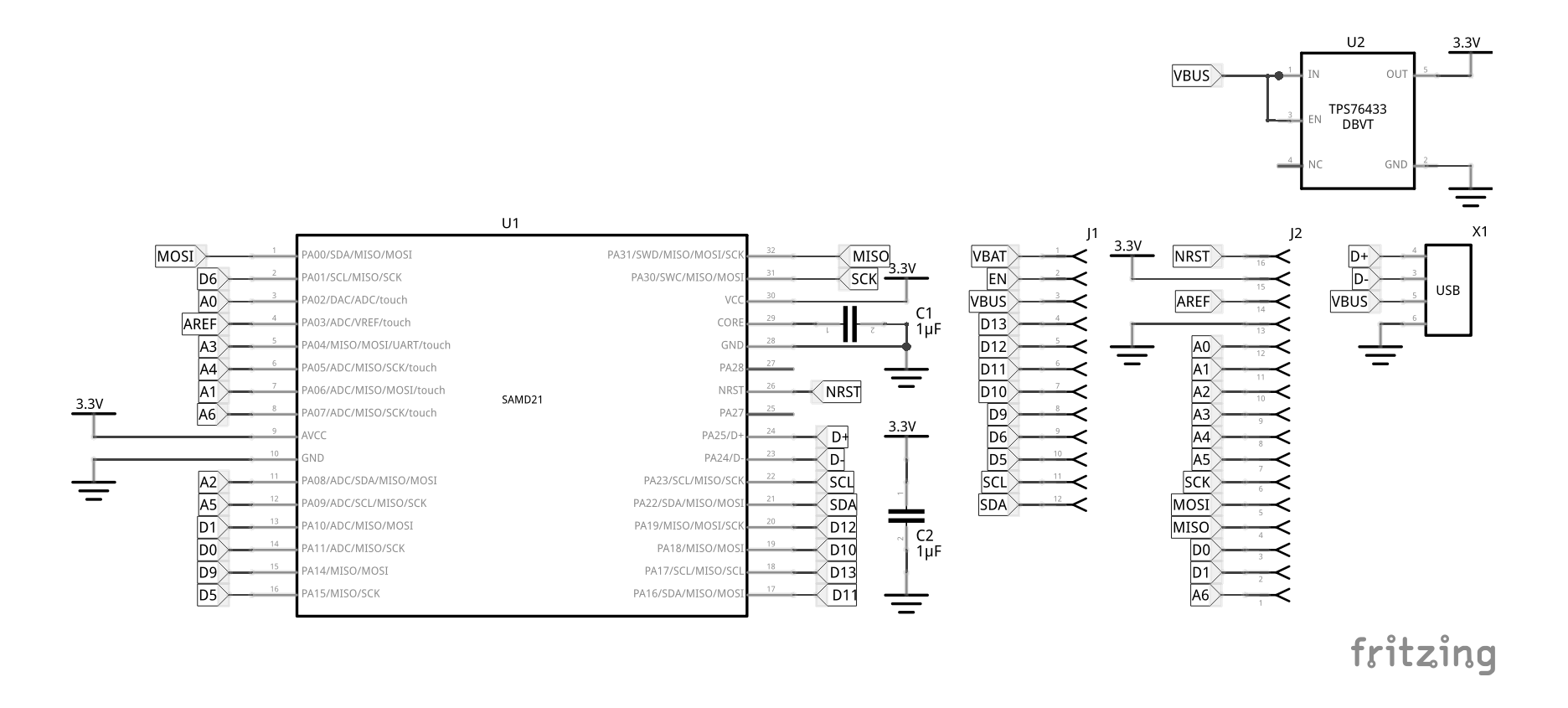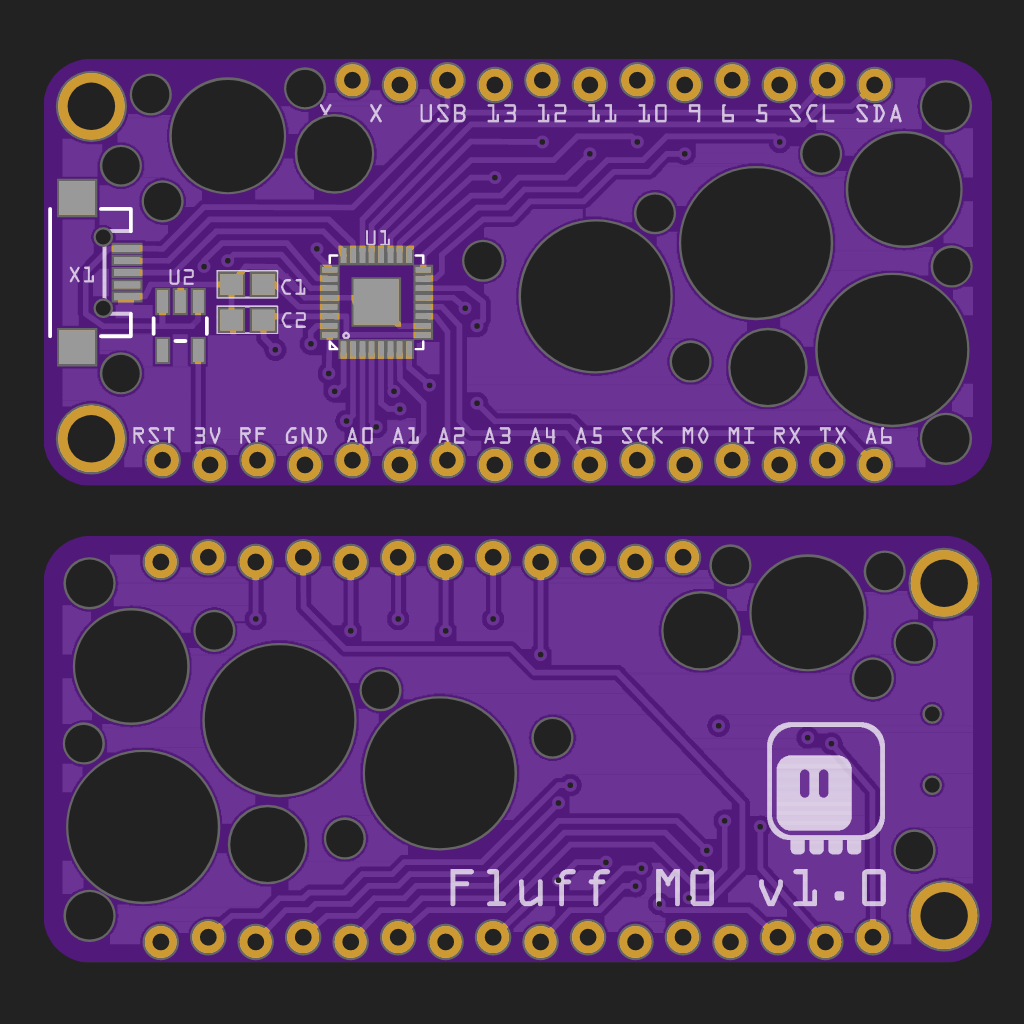Beginning¶
Published on 2020-05-03 in Fluff M0.
I was working on a version Kubik M0 that would be compatible with FeatherWings, and I started to wonder whether I could do it with the QFN-32 version of the SAMD21 chip. I knew that the original Feather M0 switched to a bigger package, because there weren’t enough pins, but I wanted to cheat anyways — I didn’t want an external flash, and I would use the internal oscillator, which saves me a bunch of pins already. I would also use the SWD and SWC pins as regular pins — who needs debugging. So I looked at the original schematics, and started to create my own version.
I wanted to re-use the same pins as much as possible, and I mostly succeeded. Of course some of the pins are simply not there on the QFN-32 package, so I had to find substitutes for those. That includes most of the analog pins, the SPI pins, and a few of the digital pins — not very bad. In the end, I even added an extra A6 pin to the board, and had two pins unused (I choose PA27 and PA28, since they can pretty much only do GPIO and nothing else).

Then I started working on the actual PCB layout. It turns out that it’s not very easy, because the pins are distributed pretty much randomly — they probably made sense on the bigger package, but with the smaller one I had to use a lot of vias. My first attempt was pretty bad, I had more vias than pins. So I deleted it and started from scratch, planning a little better this time. I came up with this:

The big black circles are holes — I figured out that since the PCB is empty anyways, I can at least make it a little bit lighter. I could have used that space for a prototyping area, but it’s kinda bad shape for that.
I’m going to order this with my next batch of PCBs and then make a custom CircuitPython firmware for it.
 deshipu.art
deshipu.art